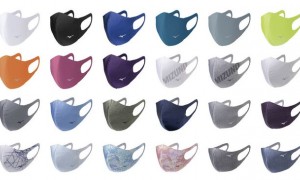Welcome to the HBR IdeaCast from Harvard Business Review. I’m Curt Nickisch.
欢迎来到哈佛商业评论的HBR IdeaCast。我是科特·尼基施。
We love to celebrate entrepreneurship. We love to celebrate great business leadership.
我们喜欢赞美创业精神。我们喜欢赞扬伟大的商业领导才能。
But for all that attention, it’s still kind of an enigma.
但尽管它拥有这么多的关注,它仍然是个谜团。
You know it when you see it, but what are the necessary traits of a successful founder?
当你看到它的时候,就知道它是什么,但是一个成功的创始人的必备特质是什么呢?
What is the decision tree that a compelling organizational leader follows?
一个令人信服的组织领导者所遵循的决策树形图是什么?
On this show, we talk to researchers who study founders and executives.
在本期节目中,我们采访了调查创始人和高管的研究人员。
We talk to professors about their deep-dive case studies, and we often talk to founders and CEOs directly.
我们与几位教授讨论他们深入的案例研究,我们也经常与创始人和首席执行官直接交谈。
My guest today interviews entrepreneurs and leaders week in and week out.
今天的嘉宾每周都会采访企业家和领导者。

He’s the host and co-creator of the podcast How I Built This, where company founders break down their journeys with him, and he hosts the podcast Wisdom From the Top, conversations with leadership experts and visionary leaders.
他是播客《How I Built This》的主持人兼联合创始人,公司创始人会和他在这个播客中一起分享他们的经历,他也是播客《Wisdom From the Top》的主持人,在该节目中,他会与领导专家和见识不凡的领导者进行对话。
Our guest today is Guy Raz, and he joins me now to talk about what he has learned from all these in-depth conversations with remarkable business people. Hey, Guy.
我们今天的嘉宾就是盖伊·拉兹,他将会和我谈谈他从这些与杰出商界人士的深入对话中学到的东西。嘿, 你好。
Curt, hello. Thank you for having me on the show.
科特, 你好。谢谢你邀请我上节目。
You’ve got hundreds of episodes of How I Built This, where you spend a good three hours in a studio interviewing an entrepreneur, a founder.
你已经录了数百集关于《How I Built This》的播客,你会花3个小时在该栏目的演播室里采访一位企业家,一位创始人。
You also have dozens of conversations with leaders in Wisdom from the Top.
你还与《Wisdom from the Top》中的领导者进行过数十次对话。
Has out of all of that a pattern emerged, or a template emerged for you?
这些访谈中有没有出现一个模式,或者一个模板?
I think that’s exactly right. Obviously, I think of these as shows. But the other side of it is that it is a large dataset.
我想这完全正确。显然,这些都是节目。但另一方面,这也是一个庞大的数据集。
So, we’ve got about 700 interviews with founders and CEOs, in depth interviews about how they built their careers, the decisions they made, the mistakes they made.
我们采访了大约700位创始人和首席执行官,对他们是如何建立自己的职业生涯,他们做过的决定,以及他们犯过的错误进行过深度采访。
And what you find over that time, you find a lot of qualities. Some leaders are really warm and personable.
在这段时间里,你会发现很多品质。有些领导真的是友好热情,风度翩翩。
Howard Schultz is a great example of this.
霍华德·舒尔茨就是一个很好的例子。
He hugs people, he gets to know his employees really well. He really lives and breathes culture.
他会拥抱员工,他非常了解他的员工。他真的生活在文化中。
And we hear about this; we hear about leaders who are really good at feedback, leaders who are really good at transparency, leaders who are really great at rallying their teams, leaders who are really good at managing people and organizations.
我们听说过这样的领导者; 我们听说过非常善于反馈的领导者,非常善于保持信息透明的领导者,非常善于团结队伍的领导者,非常善于管理人员和组织的领导者。
There’s a huge variety of qualities, what you would find is there are three qualities that all of them have, or three things that they do in their businesses, their companies, that I think are common to successful organizations.
他们有各种各样的品质,你会发现他们都有三种品质,或者他们在企业、公司里做的三件事,我认为这三件事是成功组织的共同特征。
The first is, they all create a culture of collaboration, all of these leaders.
第一件事,所有这些领导者都创造了一种合作文化。
The second thing they do is they encourage risk-taking, and then the opposite side of that coin, which is the third thing they do, which is they allow for failure.
他们做的第二件事是鼓励冒险,而硬币的反面,也就是他们做的第三件事,就是允许失败。







